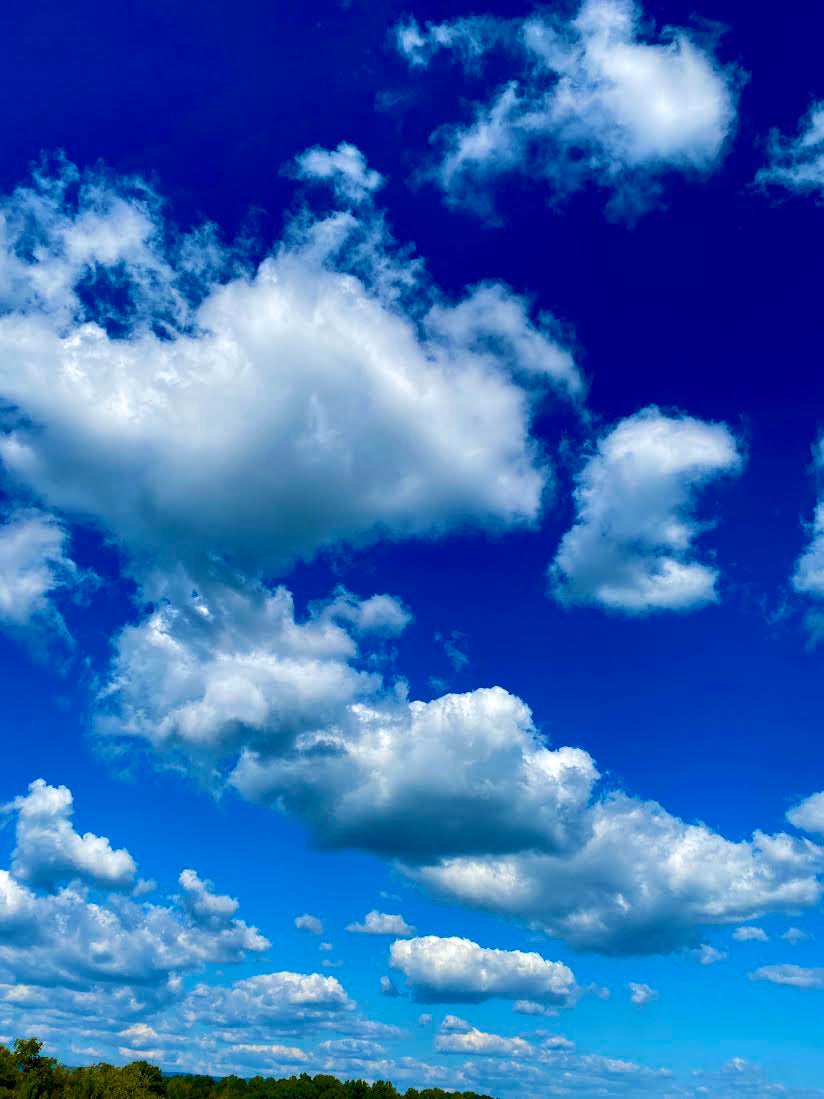The blue skies of autumn
Published 11:16 am Thursday, October 26, 2023

- Fall not only brings brilliant colored leaves, but beautiful skies as well. Photo by Steve Roark
|
Getting your Trinity Audio player ready...
|
By Steve Roark
Cumberland Gap National Historical Park
I look forward to the skies of September and October and their intense blue every year. Autumn skies typically have a lot of big puffy cumulus clouds as well, highlighting the blue even more. Scanning the sky from overhead to the horizon will show that the brilliant blue overhead fades to a lighter blue near the horizon. Let us delve into some sky science and see what’s going on.
Visible light from the Sun is a combination of all the colors in varying wavelengths that we can observe. When this light enters the atmosphere, the different wavelengths gets scattered. The reduced air humidity and lower sun position that occur this time of year scatters more blue light and less red and green, allowing more blue to reach our eyes, and so the sky appears to have a more brilliant blue compared to summer. The sciencey name for this type of light scattering is Rayleigh scattering.
When looking straight up you are observing only around eight miles of atmosphere, and so the sky has a more pure, darker blue. As you scan towards the horizon, the sky will appear a paler blue because the light must pass through more and more atmosphere before reaching your eyes. This allows for a greater mixture of color wavelengths to be scattered, and so the blue is not as pure and appears lighter.
Right at the horizon there is often a narrow band of white sky. This is because here you are literally looking at the bottom of the atmosphere, which contains a higher concentration of heavier molecules such as pollutants, water vapor, dust, or smoke. Here the reflected light wavelengths are scattered equally in all directions, and so the sky appears white. The heavy water vapor in clouds is also why clouds appear to be white. This scattering of light in all directions by large particles is called Mie Scattering.
So there you have it. As you get out and enjoy the tree colors of Fall, pay attention to the sky colors of Fall as well.
Steve Roark is a volunteer at Cumberland Gap National Historical Park.





